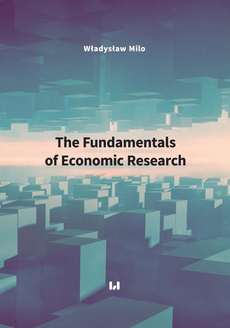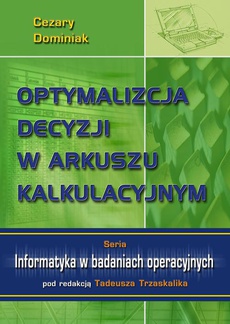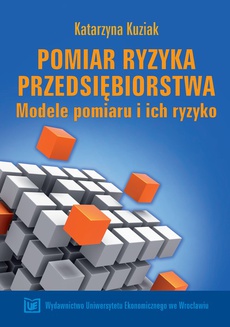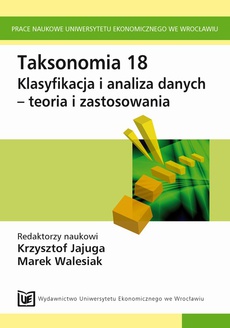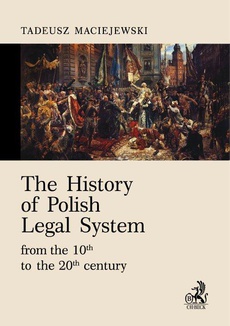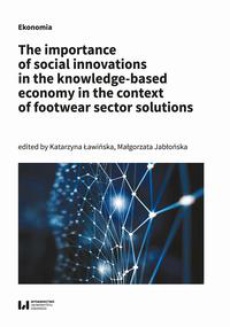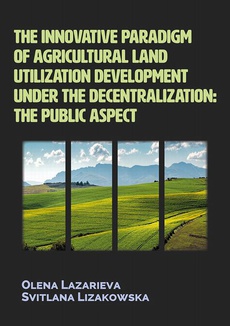POLECAMY
The Fundamentals of Economic Research
Autor:
Wydawca:
Format:
pdf, ibuk
In this monography there are presented and discussed the following categories of concepts: truth and causes, randomness, isomorphism, homomorphism, models, modelling, expectations, tools and effects of the use of monetary policy, potentia and calculus of potentias, theory and theorizing.
These categories make themes of successive chapters of this book. It seeks to provide both theoretical and empirical foundations for doing economic research by economists, econometricians, financiers, and management scientists who want to deepen their economic and methodological backgrounds.
The author presents the essence of the considered concepts from the point of view of the philosophy of science, logic, mathematics, economics and finance, as well as, empirical testing of models and theories.
| Rok wydania | 2018 |
|---|---|
| Liczba stron | 318 |
| Kategoria | Metody ilościowe |
| Wydawca | Wydawnictwo Uniwersytetu Łódzkiego |
| ISBN-13 | 978-83-8142-150-8 |
| Numer wydania | 1 |
| Język publikacji | angielski |
| Informacja o sprzedawcy | ePWN sp. z o.o. |
Ciekawe propozycje
Spis treści
| Preface | 9 |
| Chapter 1. Truth and causes | 13 |
| 1.1. Introduction | 14 |
| 1.2. Notions of truth | 15 |
| 1.2.1. Truth definitions | 17 |
| 1.2.2. Determinants of quality of truthfulness criteria | 27 |
| 1.3. Notions of cause | 32 |
| 1.4. Criteria for causality | 54 |
| 1.5. Final notes | 62 |
| Bibliography | 63 |
| Chapter 2. On randomness | 73 |
| 2.1. Introduction | 74 |
| 2.2. Qualitative concepts of randomness from antiquity until the XIX c. | 75 |
| 2.3. Final remarks | 93 |
| Bibliography | 94 |
| Chapter 3. Isomorphisms, homeomorphisms, models and modeling | 97 |
| 3.1. Introduction | 98 |
| 3.2. Homeomorphisms and Isomorphisms | 99 |
| 3.2.1. Intuitive characterizations of Homm & Isomm | 99 |
| 3.2.2. Formal characterizations of Homm | 104 |
| 3.2.3. Isomorphisms | 106 |
| 3.3. Homeomorphism, isomorphism and models | 112 |
| 3.3.1. Category of model | 114 |
| 3.4. Principles of and problems related to modeling | 120 |
| 3.5. Final remarks | 126 |
| Bibliography | 126 |
| Chapter 4. On models and modeling | 129 |
| 4.1. Introduction | 129 |
| 4.2. The essence of models | 130 |
| 4.2.1. Fundamental questions | 132 |
| 4.3. Domains and co-domains of models | 140 |
| 4.4. Kinds of models | 143 |
| 4.5. More specific forms of models | 148 |
| 4.6. Modeling and principles of modeling | 150 |
| 4.7. Models and modeling in economics | 162 |
| 4.8. Final remarks | 170 |
| Bibliography | 171 |
| Chapter 5. On expectations. Part I | 175 |
| 5.1. Introduction | 175 |
| 5.2. Concepts of rationality | 178 |
| 5.3. Rational expectations and rational predictions | 183 |
| 5.4. Adaptive rational expectations and predictions | 188 |
| Bibliography | 192 |
| Chapter 6. On expectations. Part II | 195 |
| 6.1. Introduction | 195 |
| 6.2. Non-adaptive rational economic expectations: theories and models | 197 |
| 6.2.1. H. Working’s theory of rational economic expectations | 206 |
| 6.2.2. J. Muth’s theory of rational economic expectations | 209 |
| 6.2.3. R. E. Lucas, Jr.’s theory of rational economic expectations | 214 |
| 6.2.4. T. J. Sargent’s theory of rational economic expectations | 219 |
| Bibliography | 226 |
| Chapter 7. On expectations. Part III | 229 |
| 7.1. Introduction | 229 |
| 7.2. Remarks on J. M. Keynes’ and H. Working’s theories of expectations | 230 |
| 7.3. Remarks on J. Muth’s theory of rational expectations | 234 |
| 7.4. Remarks on R. E. Lucas’ and T. Sargent’s theories of rational economic expectations | 236 |
| 7.4.1. Lucas’ theory | 236 |
| 7.4.2. T. J. Sargent’s theory | 239 |
| Bibliography | 243 |
| Chapter 8. Methodological problems of choosing the instruments and effects of monetary policy | 245 |
| 8.1. Introduction | 246 |
| 8.2. Tools of monetary policy | 250 |
| 8.3. Effects of monetary policy tools | 258 |
| 8.4. Final remarks | 266 |
| Bibliography | 268 |
| Chapter 9. Calculus of potentials in physics, mathematics and economics | 271 |
| 9.1. Introduction | 271 |
| 9.2. The measurement and calculus of potentials in physics | 272 |
| 9.3. The measurement and calculus of potentials in mathematics | 280 |
| 9.3.1. Classical results | 280 |
| 9.4. Non-classical results | 289 |
| 9.5. Measuring potential in economics | 290 |
| 9.5.1. Examples of empirical applications | 296 |
| Bibliography | 298 |
| Chapter 10. On theories and theorizing | 303 |
| 10.1. Introduction | 303 |
| 10.2. Theories in logic | 304 |
| 10.3. Theories in mathematics | 307 |
| 10.4. Theories in some other fields of science | 309 |
| 10.5. Final remarks | 316 |
| Bibliography | 317 |

